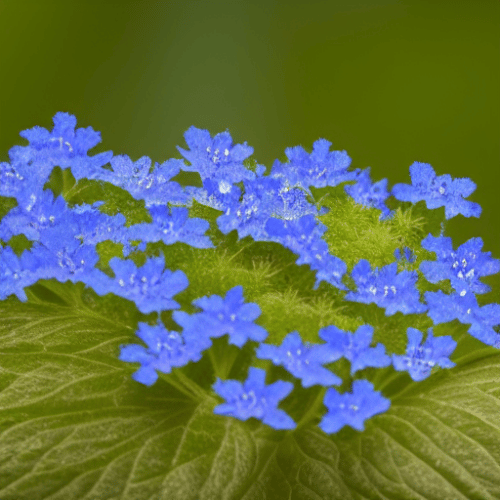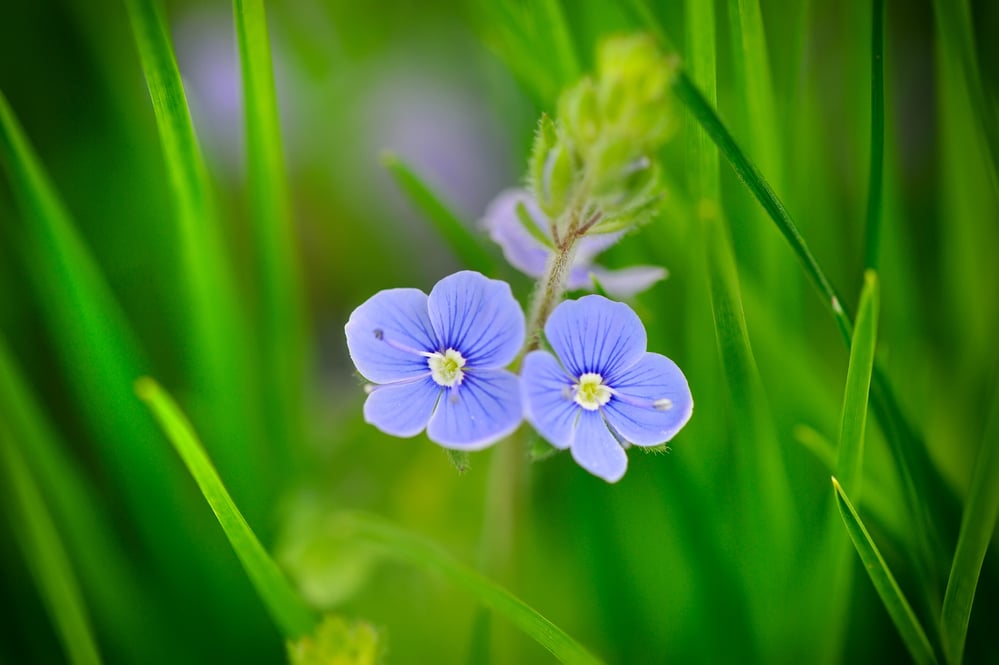Last Updated on
A germander speedwell is from the Plantaginaceae family, and one of its common names is a bird’s eye, cat’s eye, or angel’s eye. In this guide, we’ll be sharing some insightful information about this plant.
Overview
- Scientific Name: Veronica chamaedrys
- Common Name/s: germander speedwell, bird’s-eye speedwell, cat’s eyes
- Family: Plantaginaceae
- Origin: native
- Habitat: woods, grassland, hedge banks, rock outcrops, road verges, railway banks, upland screes, waste ground
- Flowering Season: May to August
How to Identify a Germander Speedwell
A germander speedwell is of the family Plantaginaceae that features oval, pointed leaves and grows up to a height of 20cm. It also sports two distinguishable lines of fine white hairs on opposite sides of the stems.

A germander plant also comes in a variety of species. All of which vary in colour, including white, blue, pink, and purple. They all feature small, lobed leaves and small flowers, while their leaves grow in pairs. The leaves are dull green, measuring 10–25mm in length.
Meanwhile, the flower spikes produce between 10 and 20 flowers and are typically a deep blue/purple colour with a white centre. Each flower has four petals, measuring around 12mm when they’re fully bloomed. They are hairy plants and can sometimes be hard to distinguish from other species of speedwells.
Where You Can Find This Flower
Most commonly, you can find germander speedwell (Veronica chamaedrys) on roadside verges, grassy lanes, and hedgerows. Simply search for a gathering of blue flowers, and they’re likely to of the speedwell variety.
Seasons
Speedwells are typically found between April and July. It’s an excellent source of nectar for solitary bees. The best time to see its beautiful flowers is around July time. Keep your lawn’s grass short to spot the flower petals blossoming.
Speedwells are typically found between April and July. It’s an excellent source of nectar for solitary bees. The best time to see its beautiful flowers is around July time. Keep your lawn’s grass short to spot the flower petals blossoming.

Can You Eat Germander Speedwell?
Yes. The speedwell flower makes a delicious tea with medicinal properties, such as helping to shift a chesty cough.
How Do I Get Rid of Germander Speedwell?
The best way to get rid of germander speedwell is to create a watering and fertiliser schedule, using a high-nitrogen lawn fertiliser, along with regular mowing. Water the lawn once a week in summer (when the weather is cooler). Additionally, leave the sprinkler on for up to two hours in each spot.
The most important thing to bear in mind is that healthy lawns can choke out speedwell (along with other lawn weeds). Therefore, if you take good care of your lawn, the speedwell is more likely to regress.
What Is Speedwell Good For?
Germander speedwell has a variety of medicinal uses, and it’s considered a diuretic, expectorant, and tonic. It was once used in England as a relaxing herbal tea, created through infusion, that can then be used as a wash for skin problems. As a result, it’s not poisonous and can be consumed.
Furthermore, its leaves have been used to treat bronchial congestion and asthma, with claims that it has medicinal properties. Germander speedwell can be brewed using the dried flowering plant, which can be used as a cough remedy.
Do you have any interesting facts/information about this plant that may be of interest to our readers? If so, share what you know in the comments.
Amy is a U.K.-based writer and editor with a penchant for helping consumers find the best home products for their needs, as well as providing easily digestible guides for living better at home. Her dedication to her work means she can usually be found elbow-deep in research or hunting down samples of the latest and greatest on behalf of her readers.
An avid DIYer herself, Amy’s passion lies in teaching others how they too can achieve their dream homes by tackling some of those pesky projects themselves! Whether it’s building furniture from scratch or turning an old dresser into a coffee table, Amy is always happy to share what she knows about making your house feel like home without spending a fortune.



